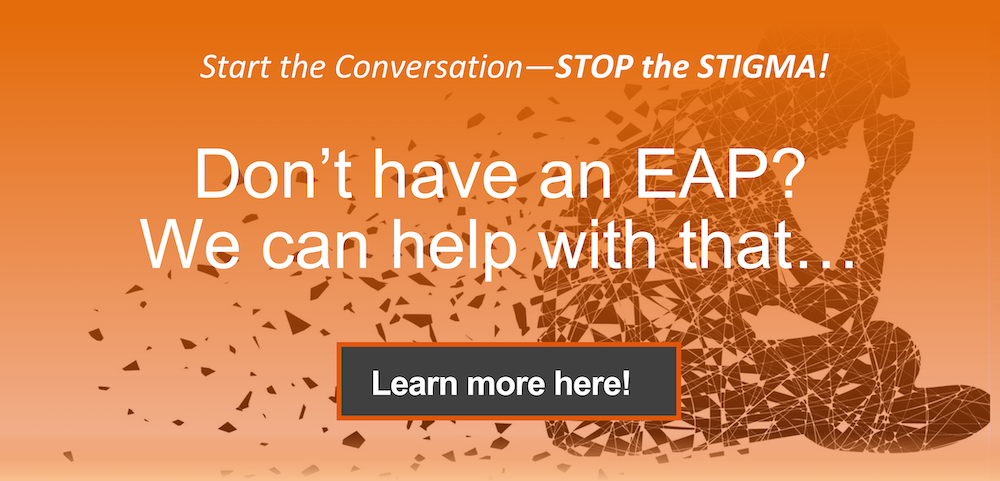Coaching That Creates Ripples: HR Strategies with Ulliance EAP
Companies often focus on big organizational levers and miss the smaller ones that truly impact employee experience. Coaching is one of those levers. While it may look small on a spreadsheet, it can transform daily interactions and improve workplace culture.
This isn’t limited to executive coaching. Peer circles, mentoring, and targeted coaching for high-impact roles nudge conversations in a better direction. People listen more carefully, feedback becomes clearer, and teams practice habits that make progress visible.
Recent research on the “coaching ripple effect” supports what many HR leaders see: 91% of employees notice positive changes after their manager receives coaching, with stronger effects when coaching continues for seven months or more.
For HR professionals, the goal is to design coaching programs that extend beyond individual managers, reinforce the right behaviors, and create lasting change across teams. Ulliance EAP programs can help provide the structure and support needed to make this happen.
What Coaching Is in the Workplace
Coaching is a structured, goal-oriented process that helps employees build awareness, skill, and accountability through guided conversation and practice. It focuses on real work, short-term goals, and repeatable habits that improve day-to-day performance.
Common Formats
- One-to-one coaching with an internal or external coach
- Manager as coach where leaders use coaching behaviors in 1:1s and team settings
- Peer coaching circles and mentoring programs that incorporate coaching skills
What Good coaching looks like
- Clear outcomes that matter to the role
- Listening that seeks understanding before advising
- Questions that surface options and tradeoffs
- Specific, timely feedback tied to observable behaviors
- Short practice cycles, reflection, and follow-through
Coaching shows up in weekly 1:1s, project kickoffs, debriefs and performance check-ins. Its emphasis is on improving work processes, not just completing tasks.
How coaching differs from other supports
- Training teaches content and process. Coaching helps apply it.
- Mentoring shares experience and sponsorship. Coaching draws out the employee’s thinking.
- Counseling addresses clinical concerns. Coaching focuses on work performance and growth.
How Coaching Improves the Day-to-Day Experience
Coaching changes the quality of everyday conversations, helping teams clarify priorities, communicate more effectively, and recover faster from setbacks.
One-to-ones that teach, not just check in
Coached leaders use one-to-ones to develop judgment. Employees bring real decisions to the discussion, explore options and risks, and agree on actionable next steps. Over time, this builds clarity and confidence.
Feedback That Produces a next step
Coaching replaces vague praise or criticism with structured observations tied to outcomes. Clear, actionable feedback reduces defensiveness and accelerates improvement.
Decision reviews that build shared standards
Coached teams hold brief decision reviews to refine shared standards, strengthen alignment, and reduce rework, rather than assign blame.
These practices make progress visible and sustainable. People know what success looks like, get guidance that helps them improve, and have space to reflect on their choices. The result is less guesswork, more learning, and greater confidence in day-to-day work.
Ripple Effects of Coaching
When coaching takes hold, the benefits rarely stay contained. A single coaching relationship often influences team communication, collaboration, and problem-solving.
Communication and psychological safety
The first ripple often appears in how people talk to one another. Coaching helps employees slow down and listen more carefully, which changes the texture of conversations. Instead of waiting to respond, they focus on understanding. Colleagues feel heard, and trust begins to grow.
Over time, that trust allows people to share concerns or ideas they might otherwise keep to themselves. The result is a team that speaks more openly and learns faster from mistakes.
Collaboration and decision quality
Teams practicing coaching behaviors ask clarifying questions, check assumptions, and work together to solve problems efficiently, improving decision quality.
That change may not make headlines, but it shortens timelines and improves results because people are thinking together, not in silos.
retention and mobility
Coaching changes how people experience growth. Employees receiving steady feedback and support gain confidence, stay engaged, and are more likely to see a future within the organization.
In workplaces where coaching is part of everyday development, employees tend to move up or across before they move out.
equity and belonging
Another ripple shows up in how opportunities are distributed. When coaching is accessible to all employees, feedback and development opportunities are distributed fairly. This fosters inclusion and a sense of belonging, reinforcing company values.
That consistency helps employees believe that recognition and advancement come from contribution, not personality. A stronger sense of belonging follows because people can see that the same standards apply to everyone.
Designing Coaching So it Sticks
Coaching only drives lasting change when embedded in daily work. HR leaders play a key role in creating routines where coaching behaviors become second nature.
HR’s role is to help those habits become a normal part of how people lead, learn, and collaborate.
Define what "good coaching" means
Without shared expectations, coaching can turn into vague conversations that go nowhere. A simple framework keeps sessions focused and productive.
Key elements include:
- Clear goals tied to real work or skill development
- Questions that help the employee explore options and next steps
- Feedback that connects behavior to outcomes
- A brief reflection on what was learned and how it will be applied
expand access
Coaching shouldn’t be reserved for executives. Frontline leaders, new managers, and team contributors all benefit, multiplying organizational impact.
Build consistency into daily work
Short coaching check-ins during regular one-to-ones help employees apply learning in real time.
Practical approaches:
- End weekly meetings with one reflective question
- Use mid-project reflections to identify lessons before deadlines
- Recognize progress in team updates to reinforce learning
Measure what matters
Participation rates only tell part of the story. The true indicator of success is how behaviors change over time.
HR can track the behaviors that reflect real impact, such as:
- Employees seeking feedback proactively
- Teams addressing challenges directly instead of avoiding them
- Managers using open-ended questions to guide problem solving
When these behaviors spread across teams, coaching moves from a program to a shared organizational practice.
5 Common Pitfalls to Avoid
Even well-intentioned coaching initiatives can lose momentum if they aren’t designed with care. HR leaders can prevent this by watching for a few common issues that limit long-term impact.
1. treating coaching as a one-time event
A single workshop or short coaching engagement may create enthusiasm but rarely leads to lasting change. The value comes from repetition. Encourage leaders to weave coaching behaviors into everyday routines so they become part of how work gets done.
2. focusing only on managers
Managers often receive the most attention in coaching programs, but peer and team-based coaching can be just as powerful. When employees at every level learn how to give and receive feedback, listen actively, and reflect on progress, the culture grows stronger and more connected.
3. ignoring the organizational context
Coaching cannot thrive in a culture that rewards the opposite behaviors. If leaders praise speed over learning or treat mistakes as failures, coaching conversations will lose credibility. Align coaching goals with company values, performance metrics, and recognition systems to reinforce the behaviors you want to see.
4. measuring the wrong things
Tracking participation rates or satisfaction surveys is easy, but those numbers don’t tell the full story. The real question is whether people communicate more clearly, solve problems faster, and feel more confident in their work. Collect feedback from employees and observe meetings or check-ins to see whether the tone and habits are improving.
5. forgetting to support the coaches
The people doing the coaching need development too. Without feedback and community, even experienced coaches can lose focus or fall back on old habits. Offer ongoing supervision, peer learning groups, or refresher sessions to keep the quality of coaching strong.
Bringing It All Together
Coaching benefits all dimensions of employee engagement—from individual one-on-one sessions to guidance from a Life Advisor well-being coach on everyday life challenges. Coaching works because it transforms conversations. When employees listen with curiosity, ask better questions, and reflect on experiences, workplace culture shifts.
Accessible, consistent coaching supported by Ulliance EAP services strengthens engagement, collaboration, and retention across your organization.
For HR professionals, the goal isn’t running more sessions—it’s embedding coaching behaviors into everyday work to create lasting impact.
When you partner with Ulliance, our Life Advisor Consultants are always just a phone call away to teach ways to enhance your work/life balance and increase your happiness. The Ulliance Life Advisor Employee Assistance Program can help employees and employers come closer to a state of total well-being.
Investing in the right EAP or Wellness Program to support your employees will help them and help you. Visit https://ulliance.com/ or call 866-648-8326.
The Ulliance Employee Assistance Program can address the
following issues:
• Stress about work or job performance
• Crisis in the workplace
• Conflict resolution at work or in one’s personal life
• Marital or relationship problems
• Child or elder care concerns
• Financial worries
• Mental health problems
• Alcohol/substance abuse
• Grief
• Interpersonal conflicts
• AND MORE!
References:
What HR Can Do to Maximize the Positive ‘Ripple Effect’ of Coaching; HR Executive; Amy Lavoie https://hrexecutive.com/what-hr-can-do-to-maximize-the-positive-ripple-effect-of-coaching
The Leader as Coach; Harvard Business Review; Herminia Ibarra and Anne Scoular
https://hbr.org/2019/11/the-leader-as-coach
How Learning and Development Can Attract and Retain Talent, SHRM
https://www.shrm.org/resourcesandtools/hr-topics/organizational-and-employee-development/pages/how-learning-and-development-can-attract-and-retain-talent.aspx
Building a Coaching Culture, International Coaching Federation
https://coachingfederation.org/resources/research/building-a-coaching-culture



.jpg?width=600&height=338&name=2Google%20Review%20NEW%20w%20click%20here%20button%20(1).jpg)
